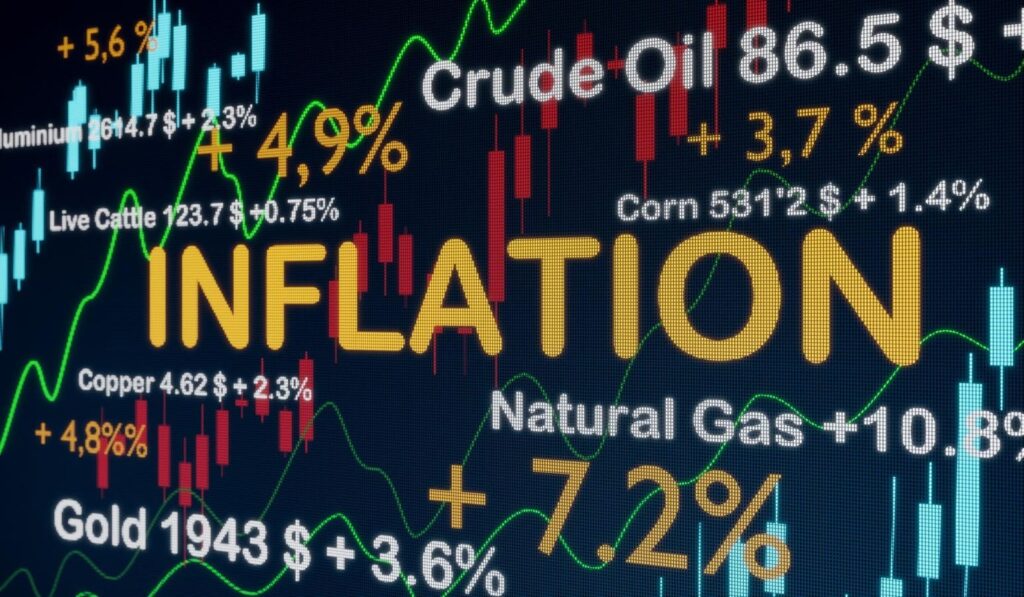Today’s report on the Consumer Price Index from the Bureau of Labor Statistics has a number of good news, mainly slowing inflation. But, some trouble spots remain and emerging trouble spots could get worse as the higher costs associated with President Donald Trump’s tariffs as well as other of his policies make their way through the economy.
Let’s start with the good news.
Overall inflation continues to slow down. The topline number showed inflation only increasing by 0.1% in May 2025. Over the past 12 months, inflation increased by 2.4%. This is up from 2.3% for the period from April 2024 to April 2024, mainly because inflation in May 2024 was flat, while it now went up by a modest 0.1%. Core inflation – price increases without the volatile energy and food components – rose also only by 0.1% in May and was up by 2.8% from a year earlier, just as it was in April 2025. Slowing inflation is great news for consumers.
Looking under the hood, there are some additional good news. Housing inflation slowed down somewhat in May, the BLS report shows. Average rents increased by 0.2%, their smallest increase since November 2024, according to BLS data. And, prices for owner-occupied housing grew by 0.3%, down from 0.4% in April of this year. Energy prices, which include gasoline, electricity and natural gas, fell by 1.0% in May alone and were down by 3.5% since May 2024. This decline is largely a result of lower gasoline prices, which were 12.0% from a year earlier. At some point, though, gasoline prices will hit bottom and will have no way to go but up. That is, gasoline prices pulling down energy prices and overall inflation may not continue.
Then there are some mixed news. For instance, natural gas, dropped, last month, but remained much higher than a year ago. Natural gas prices were 1.0% lower than a month earlier, but still 15.3% higher than a year earlier. More global competition and an unusually cold winter had driven natural gas prices higher over the winter and it has not yet come down. Similarly, prices for beef and veal fell by 0.1%, but were still 8.6% higher than a year ago. Much of this price increase came in the last few months with a bump of 0.7% in January, 2.4% in February and 1.2% in March before slowing down in April and May of this year.
Other indicators on food are also a mixed bag. Yes, egg prices are falling. They were down by 2.7% in May after dropping by 12.7% the month before. But, they were still up by 41.5% from a year earlier and people only spend less about 0.2% of their total expenditures on eggs. Other food prices, both for food at home and food away from home, went up substantially, for example for cereals and baked goods, which were up 1.0% just in May. People spend five times more on cereal and bakery goods than on eggs, as shown in today’s BLS report. Overall food at home cost 0.3% more in May than in April 2025, after falling by 0.4% in April of this year. Food prices could go up further both because of tariffs and less support for farmers, for example, through the cuts to USAID and USDA programs.
It is also important to keep in mind that some moderation in inflation in particular areas could reflect slowing consumer demand. This may be the case for rental and housing inflation, for example, but also for cars and used cars and gasoline prices, all of which saw declining prices in May. People may be driving less as the economy slows and people leave the labor force.
Finally, there are trouble spots that are worth watching as they could get worse under Trump’s economic policies. Take, for example, prescription drugs. Their prices rose by 0.6% in May after increasing by 0.4% in April of this year, according to today’s BLS report. They are still only up by 0.8% from a year earlier, but the last two months could be the beginning of an upward trend as many prescription drugs are imported.
Hospital services were also up by an above-average 0.4% in May after increasing by 0.6% in April and by 3.9% over the past 12 months. Hospital prices could continue to go up faster than other prices as hospitals are losing NIH funds and competition goes down, especially if congressional Republicans enact draconian Medicaid cuts that could result in hospital closures.
There is also some indication that climate change may take its toll. Increased prices for auto insurance and tenants’ insurance could reflect past destructions related to natural disasters such as floods and wildfires. Auto insurance went up by 0.7% in May after growing by 0.6% in April of this year, as shown in today’s BLS report. For the past 12 months, motor vehicle insurance prices were up by 7.0%.
Tenants’ insurance may be an indication of what is happening with homeowners’ insurance, too, for which the BLS does not provide a measure. Those prices were 0.8% higher in May 2025 after increasing by 0.3% in April of this year. The increase over the past 12 months was still a relatively moderate 2.9%, but the past two months could indicate the start of a more costly trend.
Today’s overall inflation numbers are good news, but there are potential new as well as persistent trouble spots. Prices for some of these key items such as medical care and food could go up further in the coming months. The question is whether such price increases will offset any inflation declines in other areas such as housing.
Read the full article here
